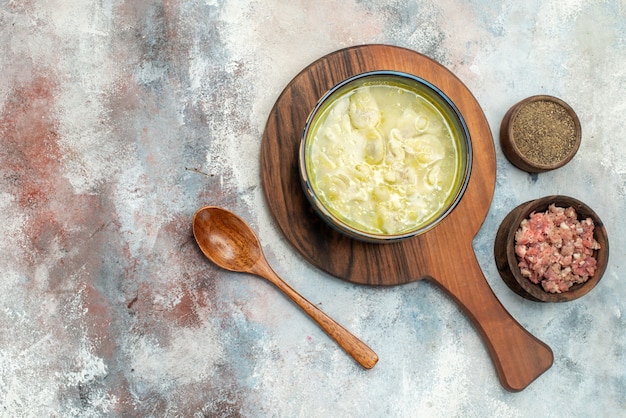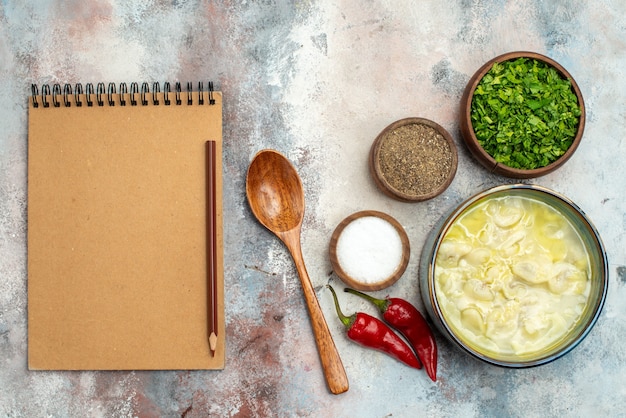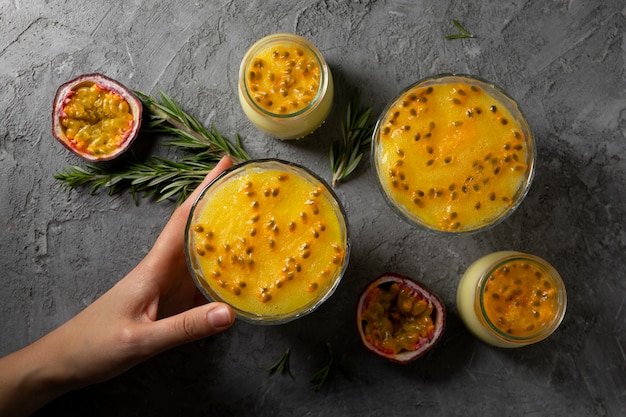(Part 1) Choosing the Right Spuds

Let's start with the foundation of your mashed potato masterpiece: the potatoes themselves. Not all potatoes are created equal, and some are definitely better suited for mashing than others. You want a potato that's both starchy and waxy, a delicate balance that ensures the mash holds its shape while releasing enough starch to create that velvety texture we all crave.
The best potatoes for mashing
- king edward: These are my absolute favourite for mashing. They're starchy, fluffy, and have a lovely creamy texture. The flavour is sublime too, with a subtle sweetness that really shines through. They're a bit more expensive than some other options, but the quality is worth it.
- maris piper: Another classic mashing potato, these are a bit firmer than King Edwards but still hold their shape well when mashed. They offer a slightly firmer texture and a slightly more robust flavour. A good choice for those who prefer a bit more "bite" in their mash.
- Desiree: These are a good all-rounder, with a good balance of starch and waxiness. They're also quite versatile and can be used for other dishes like potato salad. Their vibrant red skin is a lovely addition to any plate.
- British Queens: These are a great budget-friendly option. They're a bit more waxy than the other options but still make a lovely creamy mash. While they might not have the same luxurious texture as King Edwards, they're a reliable and affordable choice for a satisfying mash.
Avoid using potatoes that are too floury, like those labelled "baking potatoes" or "salad potatoes." These tend to be quite dry and won't give you the desired creamy texture. They're better suited for roasting or frying where their dry texture will work to their advantage.
(Part 2) Preparing the Potatoes

Now that you've got your potatoes, it's time to get them ready for cooking. I like to give them a good scrub under cold running water to get rid of any dirt or debris. Sometimes, I even use a vegetable brush to get into those crevices and ensure they're sparkling clean. Then, I chop them into roughly 2-inch pieces. This helps them cook evenly and speeds up the process. Don't worry about making them perfectly uniform – rustic is good!
Once they're chopped, I usually leave them in a bowl of cold water for about 10 minutes. This helps remove some of the excess starch, which can make the mash a bit sticky. You can also add a pinch of salt to the water, which helps to season the potatoes and draw out excess moisture. You'll notice a slight difference in the flavour of the potatoes after this step.
Boiling the Potatoes
Now, it's time to boil those spuds. I usually use a large saucepan and fill it with enough water to cover the potatoes by about an inch. Add a generous pinch of salt and bring the water to a rolling boil. Then, carefully add the potatoes and reduce the heat to a simmer. You want to cook them until they're tender enough to easily pierce with a fork, which usually takes about 15-20 minutes. But remember, every potato is different, so keep an eye on them and test them with a fork every now and then.
Don't overcook the potatoes, as this can result in a mushy texture. Aim for a tender but firm potato. You'll know they're ready when they easily pierce with a fork but still hold their shape slightly.
(Part 3) The Art of Mashing

Okay, the potatoes are cooked, now comes the fun part - the mashing! Now, I'm a firm believer in old-school methods, so I use a potato masher. There's nothing quite like the satisfying rhythmic thump of a masher against a bowl of potatoes. It's a simple tool that gets the job done beautifully. However, if you prefer a smoother texture, a hand-held electric whisk or even a food processor will do the trick.
Here's my secret tip: don't overmash! You want to create a creamy texture, not a potato paste. A few lumps are actually a good thing – it adds character. It's about finding that perfect balance between smooth and rustic.
The Importance of Texture
The texture of your mashed potatoes is absolutely key. You want them to be creamy, smooth, and fluffy. Overmashing will result in a gummy, glue-like texture, so be careful not to overdo it. Remember, you can always add more liquid later if needed, but you can't take it back!
Think of it this way: imagine you're trying to create a fluffy cloud of potato goodness. You want it to be light and airy, not dense and heavy.
(Part 4) Adding the Flavour
Now it's time to add some personality to your mashed potatoes. There are so many ways to enhance the flavour, it's all a matter of personal preference. Some like to keep it simple, while others go all out with gourmet ingredients. The key is to experiment and find what works for you.
The Classics
- Butter: A classic for a reason, butter adds richness and creaminess to mashed potatoes. I usually use about 2 tablespoons per pound of potatoes, but feel free to adjust to your liking. The best butter is unsalted, allowing you to control the salt level in your mash.
- Milk or Cream: This helps create a smooth, creamy texture and adds a touch of sweetness. I prefer to use whole milk, but you can also use semi-skimmed or even cream for a richer flavour. If you're using cream, start with a little and add more as needed, as it can quickly make the mash very rich.
- Salt and Pepper: This is essential for seasoning. I always taste the mash and adjust the seasoning as needed. A good pinch of salt will enhance the natural flavour of the potatoes, while a touch of black pepper adds a bit of depth.
Going Beyond the Basics
But you don't have to stop there. Get creative! Here are some ideas to add a touch of excitement to your mashed potatoes:
- Fresh Herbs: A sprinkle of chopped parsley, chives, or dill adds a burst of freshness and flavour. These herbs are particularly good with the classic potato varieties.
- Garlic: Roasted garlic cloves mashed into the potatoes create a wonderfully aromatic and complex flavour. The roasted garlic adds a subtle sweetness and depth that complements the potatoes beautifully. You can also use a little garlic powder for a milder garlic flavour.
- Cheese: Grated cheddar, Parmesan, or even a dollop of cream cheese can add a touch of decadence. Cheddar adds a sharp, tangy flavour, while Parmesan adds a nutty and savoury dimension. Cream cheese makes the mash incredibly smooth and rich.
- Bacon: crispy bacon bits crumbled on top add a salty, smoky flavour and some textural contrast. The crunch of the bacon adds a wonderful layer of texture and complements the creamy mashed potatoes perfectly. Use cooked bacon for the best results.
- Roasted Vegetables: For a more flavourful twist, try adding some roasted vegetables like carrots, leeks, or sweet potatoes to your mash. These add a sweetness and complexity to the mash, especially when roasted with a little olive oil and herbs.
(Part 5) Serving Your Masterpiece
You've mastered the art of making mashed potatoes. Now, it's time to serve them! There are a few things you can do to make your mashed potatoes even more delicious.
Keeping it Warm
Once your mashed potatoes are ready, I find it's best to keep them warm in a saucepan over very low heat. You can also transfer them to a heatproof bowl and wrap it in tin foil to keep them warm. Avoid microwaving them, as this can dry them out and make them rubbery.
The Art of Presentation
Presentation matters. While you can just scoop them onto a plate, try getting creative! You can use a piping bag to create swirls or dollops of mashed potatoes. Or, simply use a spoon to create a mound of mashed potatoes and then top it with your favourite toppings. A little bit of effort goes a long way in making your mashed potatoes look as good as they taste.
If you're feeling fancy, you can even use cookie cutters to shape your mashed potatoes into fun shapes. This is a great option for serving mashed potatoes to children.
(Part 6) Storing Leftovers
Leftover mashed potatoes? Absolutely! Simply store them in an airtight container in the refrigerator for up to 3 days. Reheat them gently in the microwave or in a saucepan on the stovetop. You can also use leftover mashed potatoes to make delicious potato cakes, potato pancakes, or even shepherd's pie. They're incredibly versatile, so don't feel like you need to throw them away!
(Part 7) Common Mistakes and Solutions
We've all been there, haven't we? We've all made those mashed potato mishaps that leave us feeling a bit deflated. But don't worry, I'm here to help you avoid those common mistakes.
Watery Mash
If your mashed potatoes are too watery, it's probably because you didn't drain the potatoes properly after boiling. Try not to overcook the potatoes, as this will also make them more watery. Next time, be sure to drain the potatoes thoroughly and allow them to steam for a few minutes in the pot before mashing. You can also add a little more butter or cream to help thicken the mash.
Another tip: After draining the potatoes, give them a good shake in the colander to remove any remaining water.
Lumpy Mash
If your mashed potatoes are too lumpy, it's likely that you didn't mash them enough. Don't be afraid to use your masher or electric whisk to smooth out the lumps. If the mash is still too lumpy, you can try adding a little more milk or cream and mashing it again. You can also pass the mashed potatoes through a sieve for a super smooth texture, though this will remove some of the potato solids.
Dry Mash
If your mashed potatoes are too dry, it's likely that you didn't add enough milk or cream. To remedy this, simply add a little more liquid and mash until it reaches your desired consistency. Start with a small amount and add more gradually, as it's easier to add more liquid than to remove it.
(Part 8) Beyond the Basic Mash
Now that you've got the basic mashed potato technique down, let's get creative! Here are some variations that will take your mashed potato game to the next level.
sweet potato mash
sweet potatoes are naturally sweet and creamy, making them perfect for a delicious mashed potato variation. Follow the same steps as above, but use sweet potatoes instead of regular potatoes. For extra flavour, try adding a dollop of maple syrup or a sprinkle of cinnamon. This mash is perfect for a fall or winter meal.
Garlic and Herb Mash
For a flavour-packed mash, try adding roasted garlic cloves and fresh herbs. Simply roast a few cloves of garlic until softened, then mash them into the potatoes with some chopped parsley, chives, or thyme. This mash is incredibly flavorful and pairs well with roasted meats and vegetables.
Cheesy Bacon Mash
This is a crowd-pleaser for sure! Simply add some shredded cheddar cheese and crispy bacon bits to your mashed potatoes for a cheesy, salty, and satisfying dish. For an extra cheesy kick, try using a cheese that melts easily, such as Monterey Jack or Colby.
Loaded Mashed Potatoes
Turn your mashed potatoes into a full meal with some toppings. Pile your mashed potatoes on a plate and top with your favourite ingredients. Some popular choices include: chili, pulled pork, bbq sauce, sour cream, chives, and bacon bits. You can even get creative and add your own unique toppings.
(Part 9) FAQs
Let's clear up some frequently asked questions about mashed potatoes.
1. Can I use frozen potatoes for mashed potatoes?
You can use frozen potatoes, but they won't have the same texture and flavour as fresh potatoes. Frozen potatoes tend to be more watery and may not mash as smoothly. I recommend using fresh potatoes whenever possible. If you must use frozen potatoes, thaw them completely before cooking and drain them well.
2. How long can I keep mashed potatoes in the fridge?
Mashed potatoes can be stored in the fridge for up to 3 days in an airtight container. However, they may become a bit dry and crumbly after a few days, so I recommend using them within 2 days for the best flavour and texture.
3. What can I do with leftover mashed potatoes?
Leftover mashed potatoes are a great base for a variety of dishes. You can use them to make potato pancakes, potato cakes, shepherd's pie, or even add them to a soup or stew. They're incredibly versatile, so don't be afraid to get creative!
4. What's the best way to reheat mashed potatoes?
The best way to reheat mashed potatoes is to gently reheat them in a saucepan on the stovetop with a little bit of milk or cream. You can also reheat them in the microwave, but be careful not to overheat them as this can make them dry and rubbery.
5. Can I freeze mashed potatoes?
It's not recommended to freeze mashed potatoes. The texture and flavour will change significantly once they've been frozen and thawed. It's best to use fresh mashed potatoes or make them in advance and store them in the refrigerator for up to 3 days.
There you have it – the ultimate guide to creamy, delicious mashed potatoes. From choosing the right potatoes to adding flavour and texture, you're now equipped with all the knowledge you need to create a perfect mash every time. So, grab your potatoes, get your masher ready, and get cooking! Happy mashing!
Everyone is watching

Corn on the Cob: The Ultimate Guide to Perfectly Cooked Ears
Healthy MealsAh, corn on the cob. Just the name evokes images of sunny days, barbecues, and that sweet, juicy flavour that ...

Perfect Pork Roast Oven Cooking Time: A Guide to Delicious Results
Healthy MealsThere's something truly satisfying about a perfectly roasted pork. The aroma alone is enough to make your mout...

Ham Cooking Time: How Long to Bake, Smoke, or Boil a Delicious Ham
Healthy MealsAh, ham. It's a classic, isn't it? A real crowd-pleaser, especially around holidays. And when done right, it'...

Scallops: The Ultimate Guide to Perfect Cooking
Healthy MealsAh, scallops. Those delicate, sweet, and utterly delicious morsels of the sea. They hold a special place in my...

Spaghetti Squash: The Ultimate Guide to Cooking and Serving
Healthy MealsRemember that time you saw spaghetti squash at the supermarket, looking all bumpy and strange, and thought, "W...
